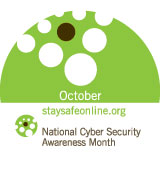Are you a Victim of Identity theft?

Image via Wikipedia
Even if you have been vigilant about protecting your important personal information, you can still become a victim of identity theft. All it takes is one purchase on an unsecured website, an improperly delivered piece of mail, or a stolen credit card for an identity thief to latch onto your identity and redesign it for his own use.
What do you do if you learn your are a victim of identity theft?
If you are a victim of identity theft, take the following four steps as soon as possible, and keep a record with the details of your conversations and copies of all correspondence.
1. Place a fraud alert on your credit reports, and review your credit reports.
Fraud alerts can help prevent an identity thief from opening any more accounts in your name. Contact the toll-free fraud number of any of the three consumer reporting companies below to place a fraud alert on your credit report. You only need to contact one of the three companies to place an alert. The company you call is required to contact the other two, which will place an alert on their versions of your report, too. If you do not receive a confirmation from a company, you should contact that company directly to place a fraud alert.
TransUnion: 1-800-680-7289; www.transunion.com; Fraud Victim Assistance Division, P.O. Box 6790, Fullerton, CA 92834-6790
Equifax: 1-800-525-6285; www.equifax.com; P.O. Box 740241, Atlanta, GA 30374-0241
Experian: 1-888-EXPERIAN (397-3742); www.experian.com; P.O. Box 9554, Allen, TX 75013
Once you place the fraud alert in your file, you're entitled to order one free copy of your credit report from each of the three consumer reporting companies, and, if you ask, only the last four digits of your Social Security number will appear on your credit reports. Once you get your credit reports, review them carefully. Look for inquiries from companies you haven't contacted, accounts you didn't open, and debts on your accounts that you can't explain. Check that information, like your Social Security number, address(es), name or initials, and employers are correct. If you find fraudulent or inaccurate information, get it removed. See Correcting Fraudulent Information in Credit Reports to learn how.
When you correct your credit report, use an Identity Theft Report with a cover letter explaining your request, to get the fastest and most complete results.
Continue to check your credit reports periodically, especially for the first year after you discover the identity theft, to make sure no new fraudulent activity has occurred.
2. Close the accounts that you know, or believe, have been tampered with or opened fraudulently.
Call and speak with someone in the security or fraud department of each company. Follow up in writing, and include copies (NOT originals) of supporting documents. It's important to notify credit card companies and banks in writing. Send your letters by certified mail, return receipt requested, so you can document what the company received and when. Keep a file of your correspondence and enclosures.
When you open new accounts, use new Personal Identification Numbers (PINs) and passwords. Avoid using easily available information like your mother's maiden name, your birth date, the last four digits of your Social Security number or your phone number, or a series of consecutive numbers.
If the identity thief has made charges or debits on your accounts, or has fraudulently opened accounts, ask the company for the forms to dispute those transactions:
For charges and debits on existing accounts, ask the representative to send you the company's fraud dispute forms. If the company doesn't have special forms, use the sample letter to dispute the fraudulent charges or debits. In either case, write to the company at the address given for "billing inquiries," NOT the address for sending your payments.
For new unauthorized accounts, you can either file a dispute directly with the company or file a report with the police and provide a copy, called an "Identity Theft Report," to the company.
If you want to file a dispute directly with the company, and do not want to file a report with the police, ask if the company accepts the FTC's ID Theft Affidavit . If it does not, ask the representative to send you the company's fraud dispute forms.
However, filing a report with the police and then providing the company with an Identity Theft Report will give you greater protection. For example, if the company has already reported these unauthorized accounts or debts on your credit report, an Identity Theft Report will require them to stop reporting that fraudulent information. Use the cover letter to explain to the company the rights you have by using the Identity Theft Report. More information about getting and using an Identity Theft Report can be found here.
Once you have resolved your identity theft dispute with the company, ask for a letter stating that the company has closed the disputed accounts and has discharged the fraudulent debts. This letter is your best proof if errors relating to this account reappear on your credit report or you are contacted again about the fraudulent debt.
3. File a complaint with the Federal Trade Commission.
You can file a complaint with the FTC using the online complaint form; or call the FTC's Identity Theft Hotline, toll-free: 1-877-ID-THEFT (438-4338); TTY: 1-866-653-4261; or write Identity Theft Clearinghouse, Federal Trade Commission, 600 Pennsylvania Avenue, NW, Washington, DC 20580. Be sure to call the Hotline to update your complaint if you have any additional information or problems.
By sharing your identity theft complaint with the FTC, you will provide important information that can help law enforcement officials across the nation track down identity thieves and stop them. The FTC can refer victims' complaints to other government agencies and companies for further action, as well as investigate companies for violations of laws the agency enforces.
Additionally, you can provide a printed copy of your online Complaint form to the police to incorporate into their police report. The printed FTC ID Theft Complaint, in conjunction with the police report, can constitute an Identity Theft Report and entitle you to certain protections. This Identity Theft Report can be used to (1) permanently block fraudulent information from appearing on your credit report; (2) ensure that debts do not reappear on your credit report; (3) prevent a company from continuing to collect debts that result from identity theft; and (4) place an extended fraud alert on your credit report.
4. File a report with your local police or the police in the community where the identity theft took place.
Call your local police department and tell them that you want to file a report about your identity theft. Ask them if you can file the report in person. If you cannot, ask if you can file a report over the Internet or telephone. See below for information about Automated Reports.
If the police are reluctant to take your report, ask to file a "Miscellaneous Incident" report, or try another jurisdiction, like your state police. You also can check with your state Attorney General's office to find out if state law requires the police to take reports for identity theft. Check www.naag.org for a list of state Attorneys General.
When you go to your local police department to file your report, bring a printed copy of your FTC ID Theft Complaint form, your cover letter, and your supporting documentation. The cover letter explains why a police report and an ID Theft Complaint are so important to victims.
Ask the officer to attach or incorporate the ID Theft Complaint into their police report. Tell them that you need a copy of the Identity Theft Report (the police report with your ID Theft Complaint attached or incorporated)to dispute the fraudulent accounts and debts created by the identity thief. (In some jurisdictions the officer will not be able to give you a copy of the official police report, but should be able to sign your Complaint and write the police report number in the "Law Enforcement Report" section.)
The Federal Trade Commission is the federal clearinghouse for identity theft complaints. The complaints they receive from victims are available to other federal, state and local law enforcement officials nationwide.
While dealing with problems resulting from identity theft can be time-consuming and frustrating, most victims can resolve their cases by being assertive, organized, and knowledgeable about their legal rights.
The FTC has provided helpful sample letters and tools designed to assist you in resolving disputes related to identity theft and in asserting your legal rights.
Remember, the best defense is always a great offense!


 NEWSLETTER SIGN UP
NEWSLETTER SIGN UP SUBSCRIBE
SUBSCRIBE CONTACT
CONTACT

















Aug.23, 2010
To: Denise Richardson
My name is Candace. I was first a survivor of child abuse; as soon as credit was available to me my father (the thief and rapist) used my I.D. to make sure no more credit would be issued to me (and possibly used against him). My mother knew he was supporting other women with our college money; proof, while he raped me in my bed one more time just before he left (ran); he would get away with everything. SHE FILED FOR DIVORCE and went after him for the rape(s); THE LATER HE ALWAYS THOUGHT WAS ME.
Since no one believed me and so far I had wound up with my teeth wired together and my face in a splint, stumped for an answer if asked even what's my name; I adapted by selective memory with a mind like a steel trap (I had been a varsity letter athlete and honor student)- until I let myself remember which was about a year after he died in 2004.
There were always all these circumstance and realities totally beyond my control I could either fight and try to figure them out or live- I never could do both. My injuries are extensive they are inflicted through out my life- I was never allowed to go off to camp much less school and was at home and even called the police but this
country and it's laws did nothing for me. I was hit in the head with a rock that the doctor was told weighed 15 pounds, I have had 5 knee surgeries- 3 acl graft and reconstruction 1 replacement and that is just my left leg. Not only my father now after his death from the grave someone he met in prison I presume walked into MY bank in 2007 (maybe '08) with all my I.D. where; however, the only knew me at the Fort Worth branch in Carrolton they were opening an account for this new person- All ME. No I am not scizoid, JUST post traumatic stress to the max.
There is more. My Question is is this enough?
Thanks,Candy